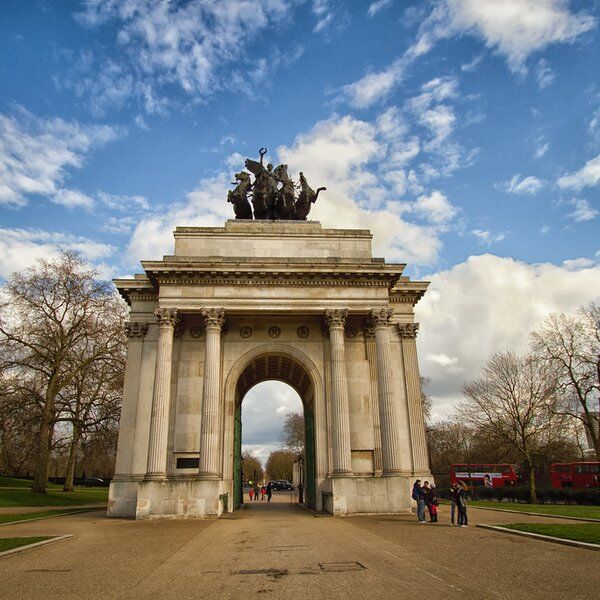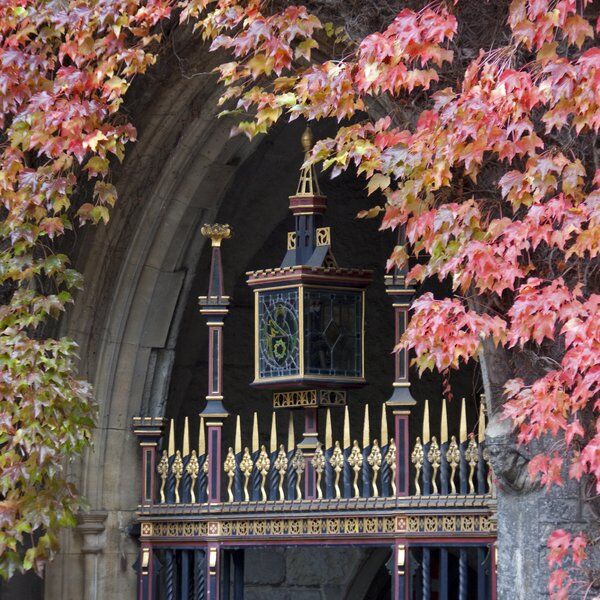
Discover Millennium Mills in London
Originally constructed at the turn of the 20th century as a flour mill in the West Silvertown area of London's historic Royal docklands, Millennium Mills has since fallen into neglect and decay. As a result it is often likened to the Battersea Power Station of the Royal Docks.
In recent years, this derelict complex has been the focus of a £3.5 billion redevelopment initiative spearheaded by The Silvertown Partnership. However, the journey toward its revival has been characterised by false starts and dashed hopes; t is a wonder if it will ever be complete.
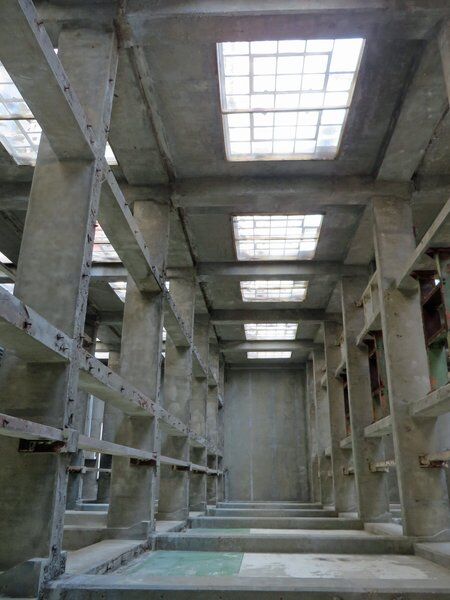
The History of Millennium Mills
Flour Milling in London (1855 - 1905)
In 1855, the Royal Victoria Dock opened its gates, welcoming a new dawn for industrial Britain. With a depth of 13 metres and state-of-the-art dockside cranes, it quickly became a hub for international trade, particularly in flour milling. By the early 20th century, the docklands became the centre of processing imported grain into flour for the domestic market.
The Birth of Millennium Mills (1905)
Amidst this flour milling highlight, the construction of Millennium Mills was a big milestone. Built by Vernon & Sons in 1905, these grand mills were designed to convert imported grain into flour at an impressive rate of 100 sacks per hour. Named after their own product, Millennium Flour, which had secured the Miller Challenge Cup in 1899, these mills were at the top of industrial achievement.

Destruction and Resurrection (1917 - 1953)
Tragedy struck in 1917 when an explosion occurred nearby at Brunner Mond's munitions factory, severely damaging the original Millennium Mills. However, in 1933, Spillers, having acquired Vernon & Sons, rebuilt Millennium Mills in the striking Art Deco style that still exists today (somewhere under all the age and ruin).
Trials of War and Reconstruction (1939 - 1953)
The outbreak of World War II brought further challenges as the Royal Docks suffered extensive bomb devastation. Millennium Mills, along with neighbouring Premier Mills, bore the brunt of the Blitz. Yet, post-war reconstruction efforts saw Millennium Mills rise once again, its iconic silhouette propping up against the London skyline by September 1953.
The Decline and Closure (1960s - 1981)
Despite its resilience, like many industrial sites across Britain, Millennium Mills fell victim to economic change. By the 1960s, the Royal Docks faced an uncertain future. Finally, in 1981, they were closed and the mill also ceased operations. Over the following decades the building languished in a state of abandonment.
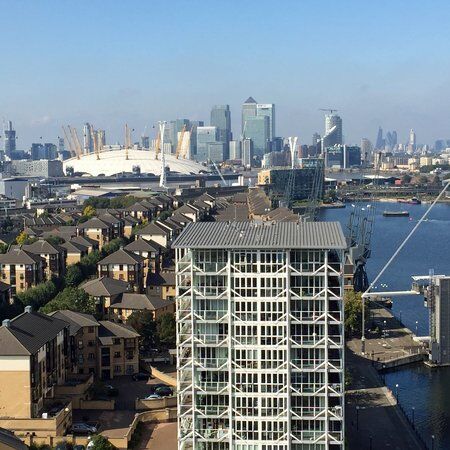
Millennium Mills: Abandoned But Not Forgotten
Throughout its years of disuse, Millennium Mills acquired a new identity as a cultural landmark becoming a site for urban exploration.
In popular culture it’s haunting, industrial beauty has featured as a backdrop in TV dramas "Ashes to Ashes” and "Paddington 2”. As well as films like Danny Boyle's "Trance”, Terry Gilliam's "Brazil", “The Man From U.N.C.L.E.", and Derek Jarman's “The Last of England."
The mill also played a role in Jean-Michel Jarre's concert "Destination Docklands" (1988), where it was transformed into a canvas for lighting effects. In music videos it has been instrumental for bands like The Smiths and Coldplay. And became the setting for missions in popular gaming titles such as "Splinter Cell: Blacklist".
Renowned British writer and psycho-geographer, Iain Sinclair, describes the Mills as a symbol rich with historical and metaphorical significance, envisioning it as a stage for apocalyptic rituals and punk-inspired spectacles.

Redevelopment Plans for Millenium Mills
A Public Aquarium
In the 1990s, plans to save Millennium Mills from decay were briefly proposed when the London Docklands Development Corporation (LDDC) considered converting the site into a public aquarium. However, funding could not be raised for the project and the plans were eventually scrapped. Despite being locally listed by Newham Council, the fate of Millennium Mills seemed uncertain once more.
Silvertown Quays
In the early 2000s, proposals were put forward for a massive redevelopment project backed by a partnership between the London Development Agency (LDA) and joint developers.
The ambitious project wanted to not only restore Millennium Mills but also rejuvenate the surrounding landscape. Plans were put in place for a commercial hub, luxury loft-style apartments known as Silvertown Quays, recreational spaces, and extensive waterfront amenities. In line with the earlier theme, a new aquarium, designed by Terry Farrell and Partners, was also planned as part of the development.
Despite initial approvals and high expectations, the Silvertown Quays project encountered numerous setbacks. Delays, funding issues, and a lack of progress ultimately led to its cancellation in 2010. This second failure left Millennium Mills once again in a state of limbo and highlights the challenges of repurposing such a historic site.
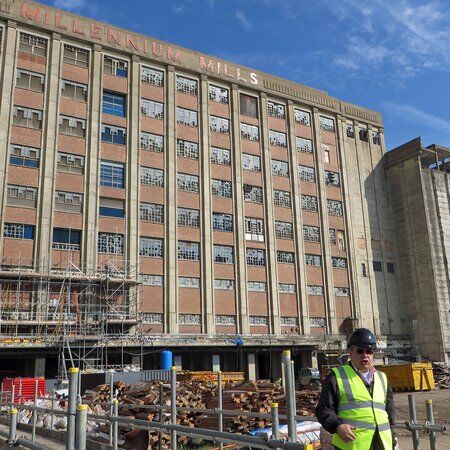
London Pleasure Gardens
In 2012, a brief moment of optimism arose with the opening of the London Pleasure Gardens on the site, coinciding with the London Olympics. However, the venture was short-lived (5 weeks short-lived), after organisational issues and financial troubles.
Recent Redevelopment Plans for Millennium Mills
The Beginning of Redevelopment Plans
In April 2015, Newham Council granted planning permission to The Silvertown Partnership for a £3.5 billion redevelopment project, including the Millennium Mills site. The vision included transforming the building into a centre for start-up businesses. The plan also involved filling part of Pontoon Dock to facilitate development and was supported by the Mayor Boris Johnson.
Clearing the Building and Securing Funding
The initial phase of the project focussed on clearing Millennium Mills of asbestos. This crucial step received a £12 million grant from the government. Penny Mordaunt MP and Richard Blakeway visited the site, highlighting the potential for job creation and economic growth in the area.

Opening to the Public
In September 2015, Millennium Mills opened its doors to the public during the Open House London weekend. Visitors had the opportunity to explore various parts of the building.
Further Development
By 2019, joint developers Lendlease and Starwood Capital received consent for the first phase of the project, which included nearly 1,000 homes. This phase also involved refurbishing Millennium Mills with an exhibition space, dining options, and workspaces for new businesses.
Hurdles and Hope for the Future
Despite setbacks and disputes between developers and previous owners, the vision for Silvertown remains hopeful. Essel Group's interest in investing in the project underscores its potential as a world-class destination celebrating culture and history.
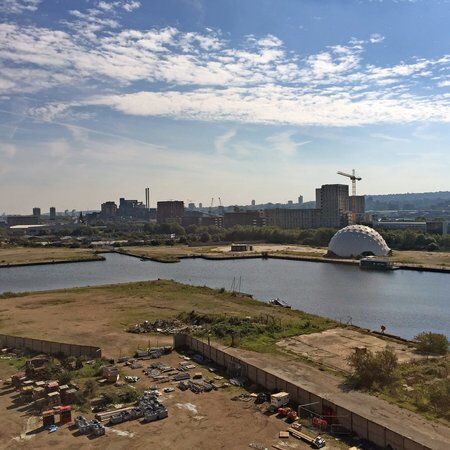
Explore London with CityDays
Interested in finding more fun things to do in London?
Discover London’s secret sights and noteworthy nooks by playing one of our London treasure and scavenger hunts, food experiences, escape room games or walking tours.
You’ll find curated trails and hunts all over London, including Central London, Mayfair, Shoreditch, Kensington and Southwark.
We also provide team building activities in London that can be made bespoke to include your office, wherever in the capital you are.
All you have to do is team up with your partner, friends, family or colleagues to solve riddles, complete challenges and answer trivia to lead you on an unforgettable journey around London’s most intriguing streets.
The best part? We’ll recommend top-rated pubs, cafés and restaurants and give your team the chance to earn rewards by competing on our leaderboard.
Take the stress out of planning your visit to London and book your adventure today!
Not visiting London this time? Don’t worry, you’ll find us all over the world.














